|
10/2/2021 0 Comments Singing with Correct PostureCorrect posture in singing is a vitally important component of efficient vocal production. If you have bad posture, it can significantly affect the quality of your sound. Correct posture in singing starts with your feet. Your feet should line up with the width of your shoulders. In order to get a sense of grounding, your knees should be slightly bent and not locked back. Your shoulders should be back and your head should be rotated up and back, as if someone is tugging on the hair at the back of your head. Obviously, good posture isn't the only component of good vocal technique, but with out it, it is impossible for all of the components of your voice to function properly.
Observe in your life how your daily activities affect your posture, like sitting on the couch looking at your phone, working at your desk or watching TV.
0 Comments
Resonance a vital component to singing. With correct resonance, the voice can penetrate a large opera house filled with thousands of people. Without it, the voice carries about 10 feet and then dissipates. In my YouTube video, I discuss how resonance works in classical singing. First, I gave a brief overview of how resonance works. I played C3 on the piano and I explained what the fundamental frequency (the actual pitch) and the overtones were doing in the spectrogram. In the picture above, you can see the C3 I played on the piano. The first overtone above the C3 is an octave higher (C4). The second overtone is a fifth above the C4, which is G4. The third overtone was a fourth above the G4, which is C5. The next overtone is a third above C5, which is E5. Interestingly, all of the overtones so far make a major triad (C, E, G). The next overtones are: Bb6, C6, D6, E6, F6, G6, etc. These last overtones do not line up exactly with the piano. In the picture above of the spectrogram, I sing C4. Notice the difference between the piano and the voice. First of all, my voice has vibrato, so that shows up as a wave-length in the spectrogram. My vibrato goes above the pitch about a 1/4 step, and then goes below the pitch about a 1/4 step. The piano has no vibrato, so it shows up on the spectrogram as a strait line. You will notice that around the 2700-3000 Hz range, the overtone is very strong. This is what we call the singer's formant, which is responsible for the "ring" to the voice, or squillo, as they call it in Italian. In the picture above, I demonstrate good and bad resonance. The example on the left is good resonance. The example on the right is a dull sound, and it is reflected in the 2700-3000 Hz range. In the picture above, I sing the vowels [i], [e], [a], [o], [u]. Notice the difference between the vowel around the 1000-2000 Hz range. Now look at what remains the same: the singer's formant, or the 2700-3000 Hz range. In the picture above, I sing a 5 note scale, starting on G3. Notice how the 5+ overtones above mirror the fundamental frequency. Now look at the 2700-3000 Hz range. The singer's formant remains constant, regardless of what the ascending/descending scale of the fundamental frequency. In the 2 pictures above, I sing the vowels [i], [e], [a], [o], [u] with good resonance and bad resonance. Notice in the second picture that in the 2700-3000 Hz range that I started singing with good resonance on the vowels [I], [e], but I lost the resonance in on the vowels [a], [o], [u]. In the picture above, I demonstrate the difference in resonance between strait-tone and vibrato singing. The resonance in the singer's formant is amplified by vibrato. In the picture above, I sing a 5-note scale in falsetto. The singer's formant is much weaker than non-falsetto singing. In the picture above, I sing in sottovoce, resulting in very weak overtones in the 2700-3000 Hz range.
The main takeaway is that the ring to the voice is imperative for good vocal production for classical singers and opera singers. This ring is visually observed in the 2700-3000 Hz range using a spectrogram. This overtone is called the singer's formant, which is unique to singers. No other instrument resonates like the human voice, and that is why singers can sing over a huge orchestra in a large opera house and still be heard. |
AuthorI am an opera singer and I have been singing for over 30 years. In this blog, I will discuss vocal technique, performance strategies, and various aspects of singing. ArchivesCategories |
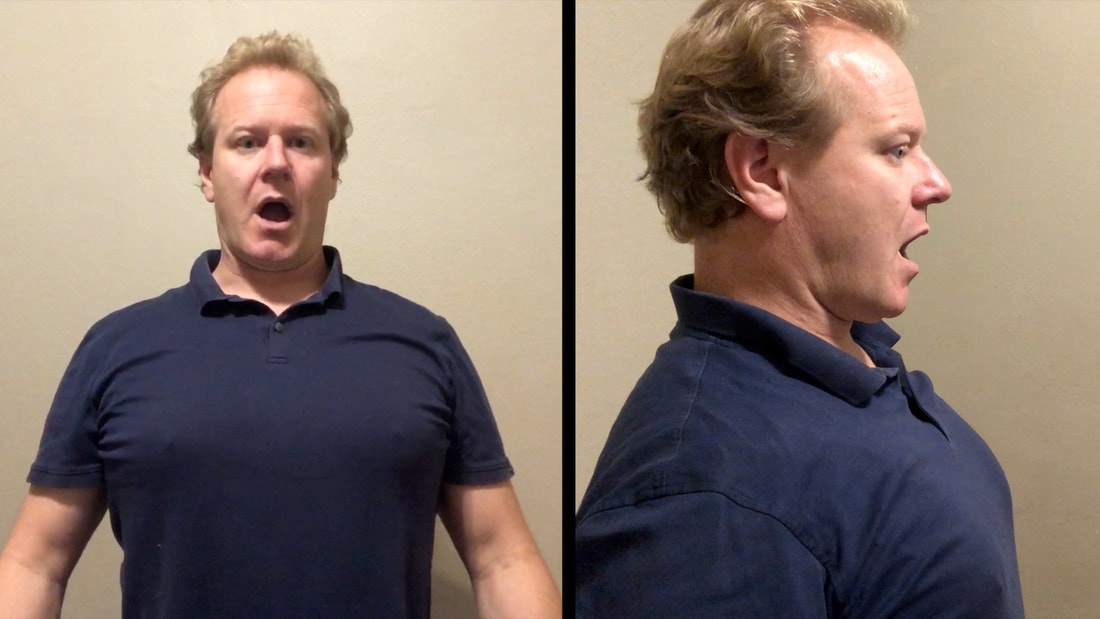
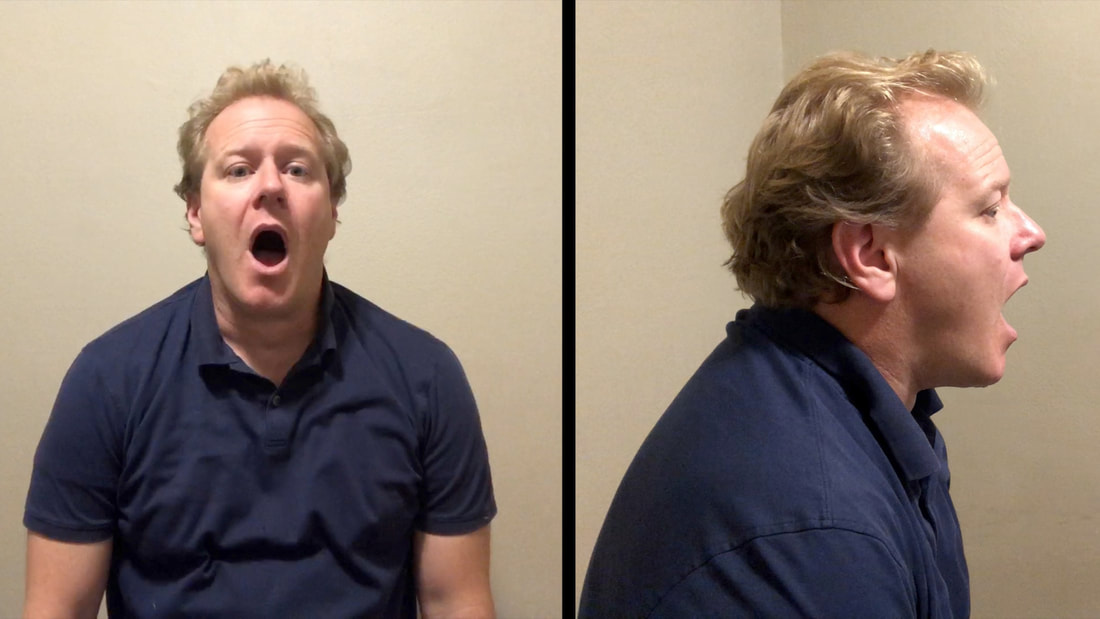
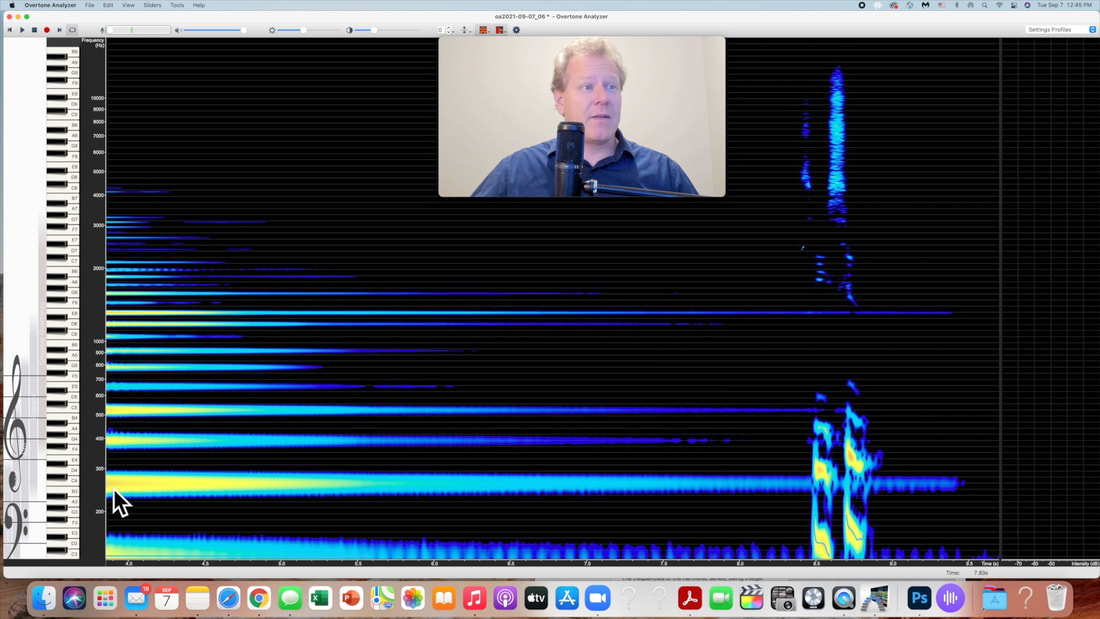
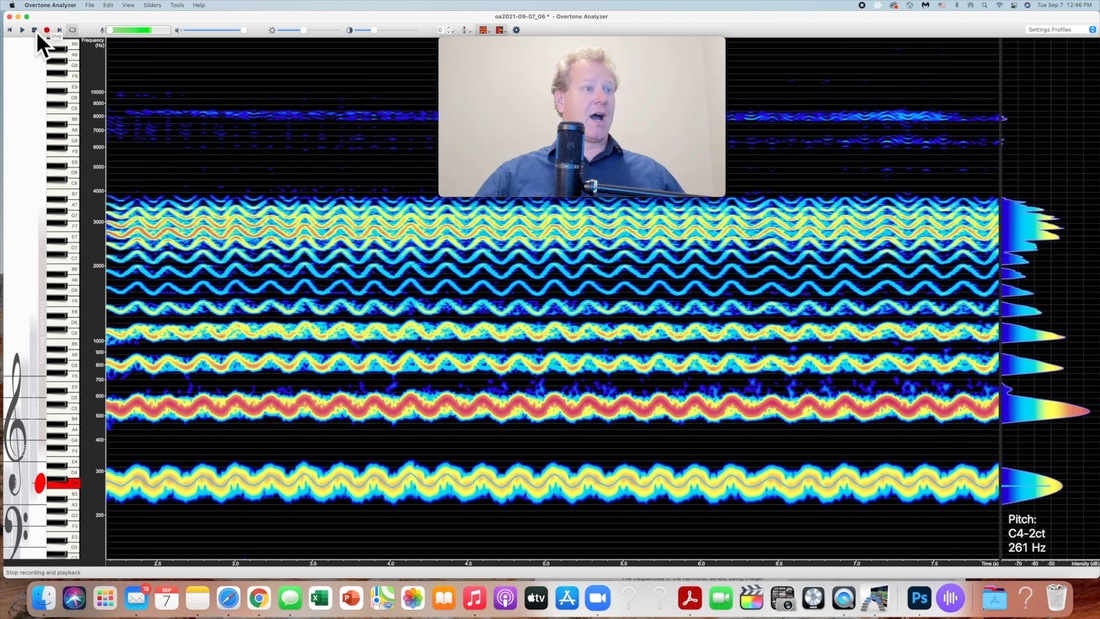
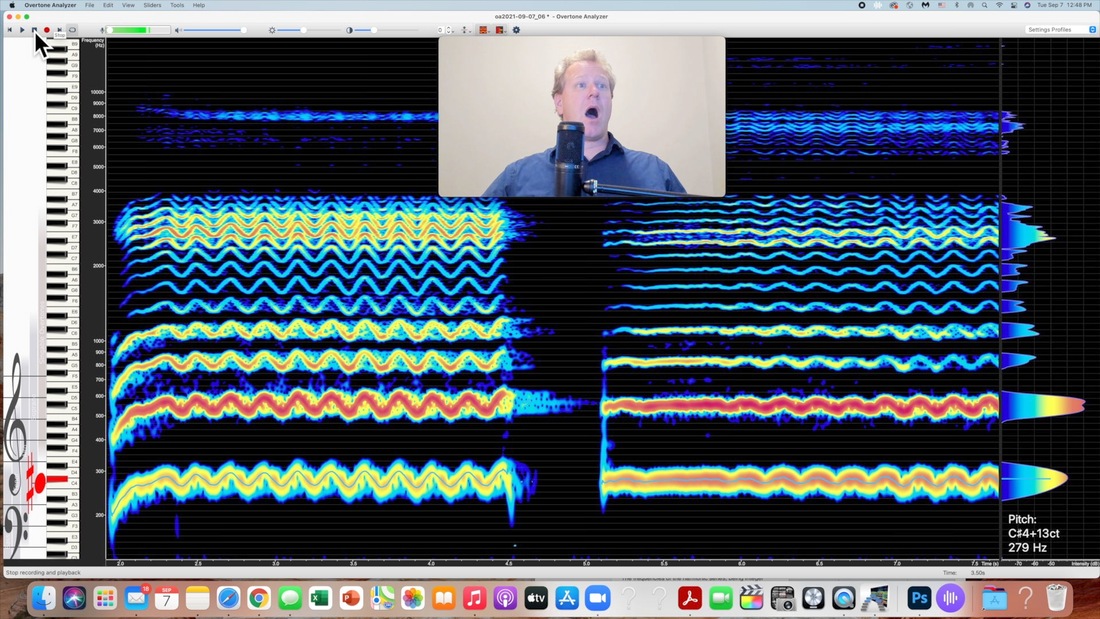
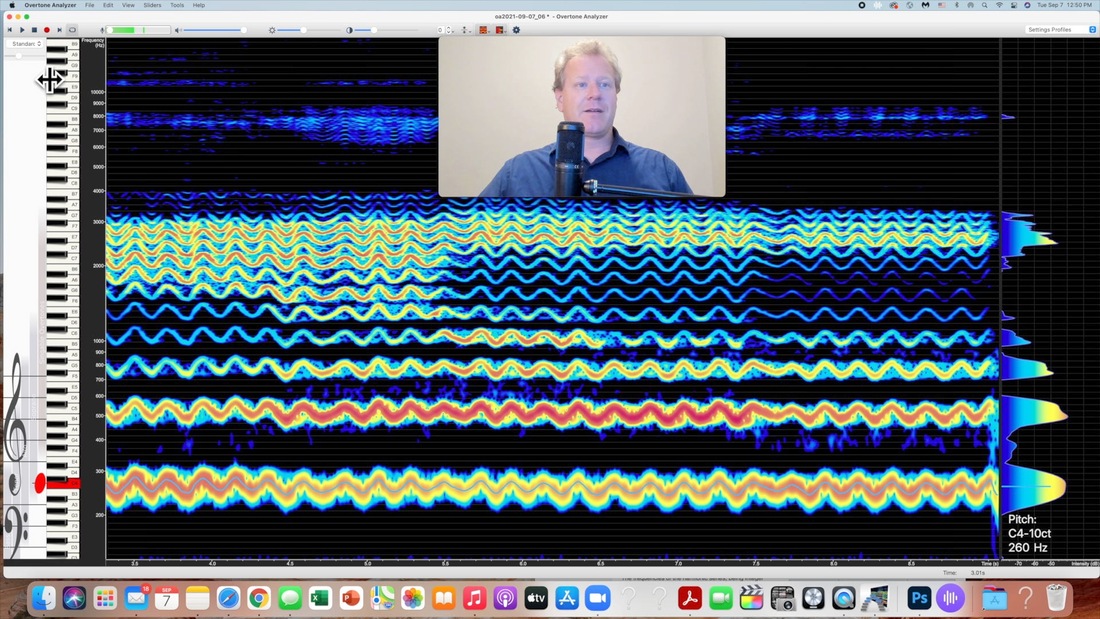
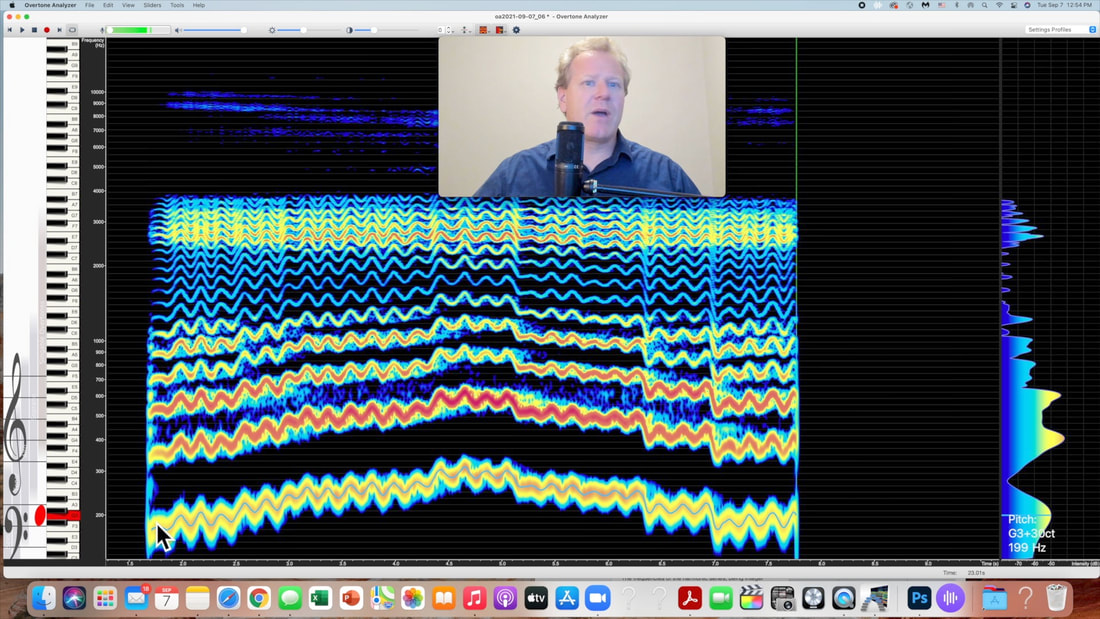
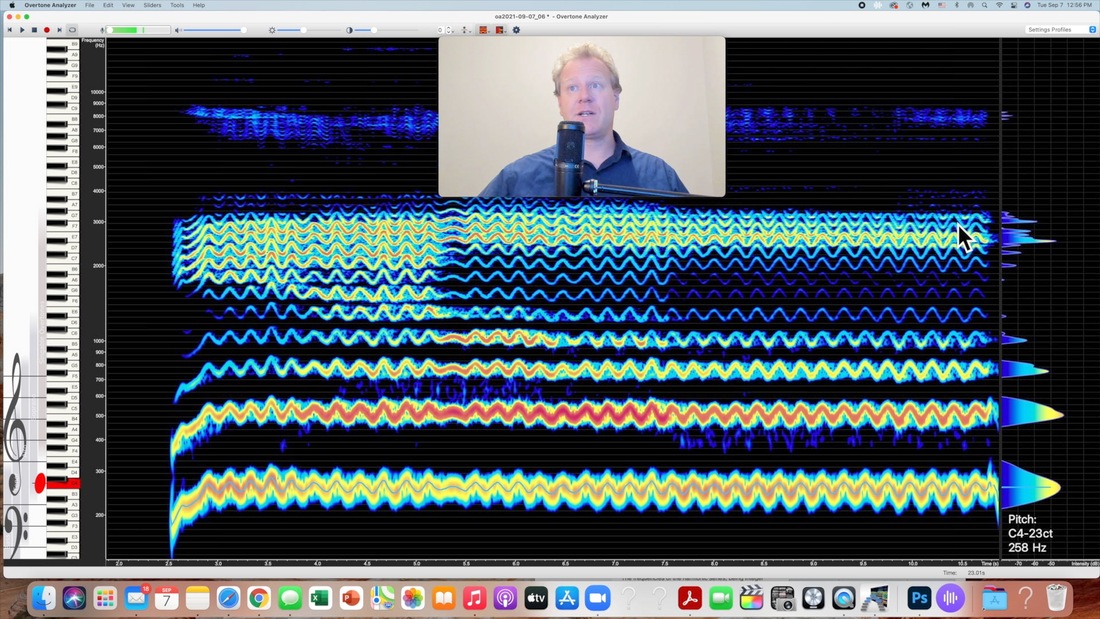
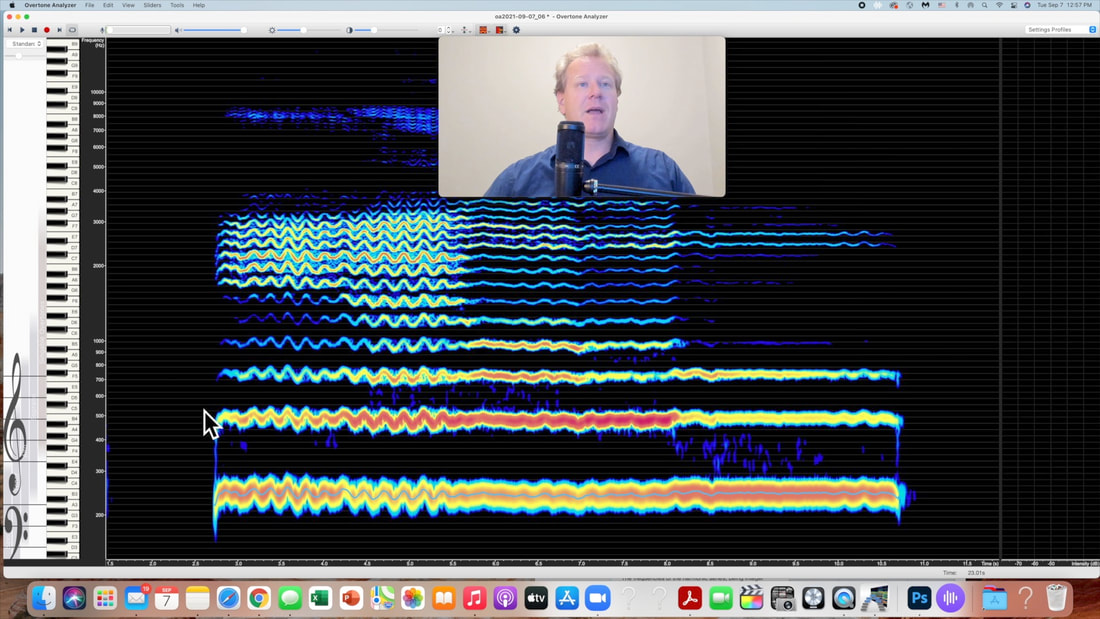
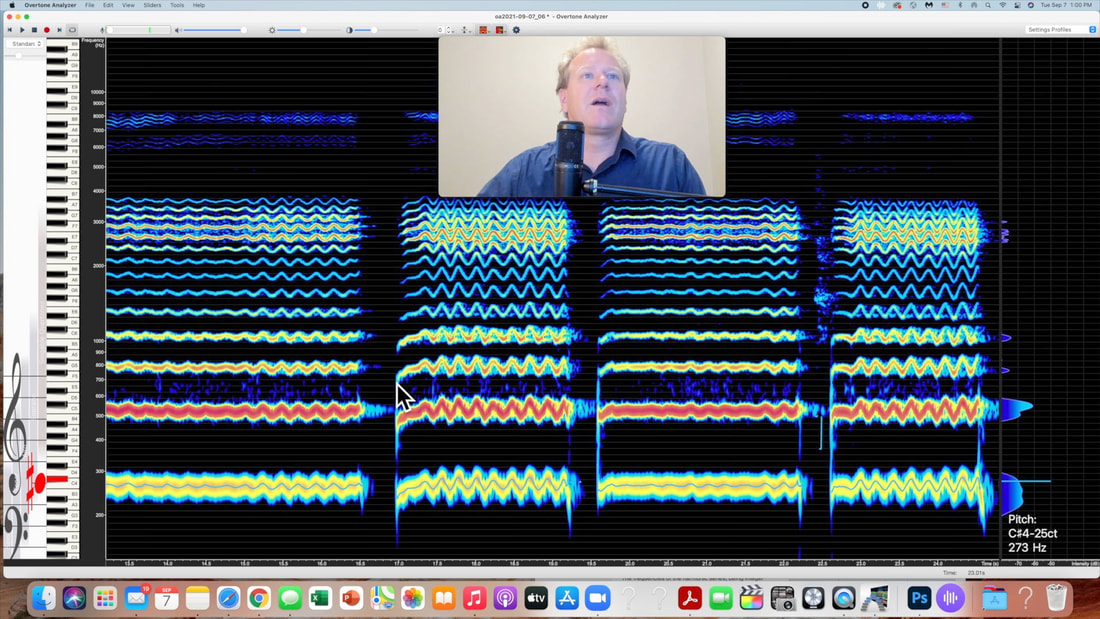
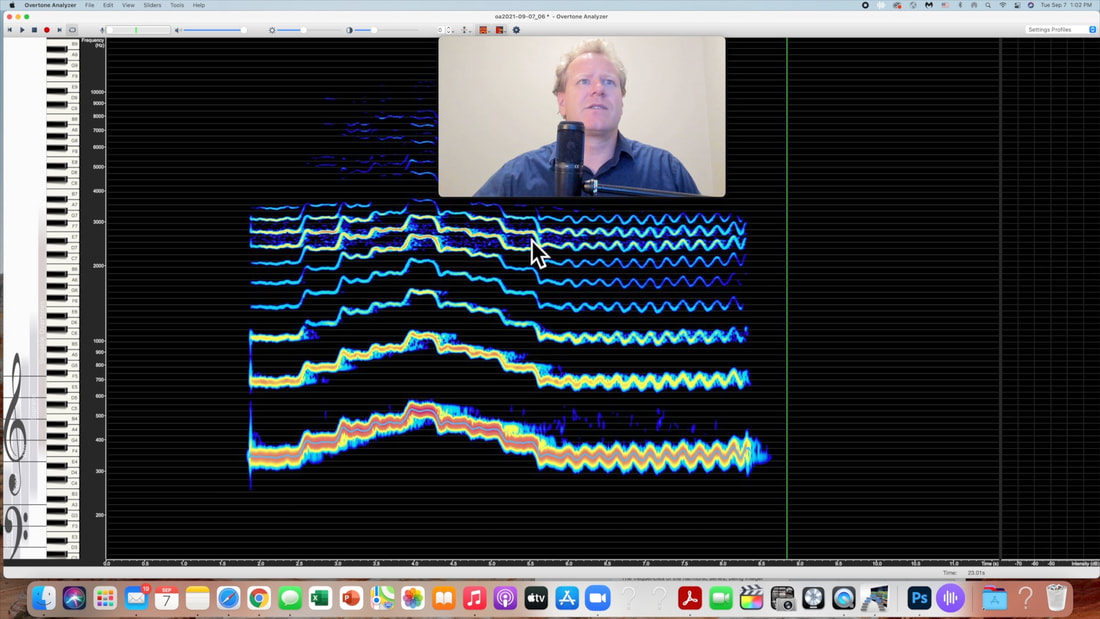
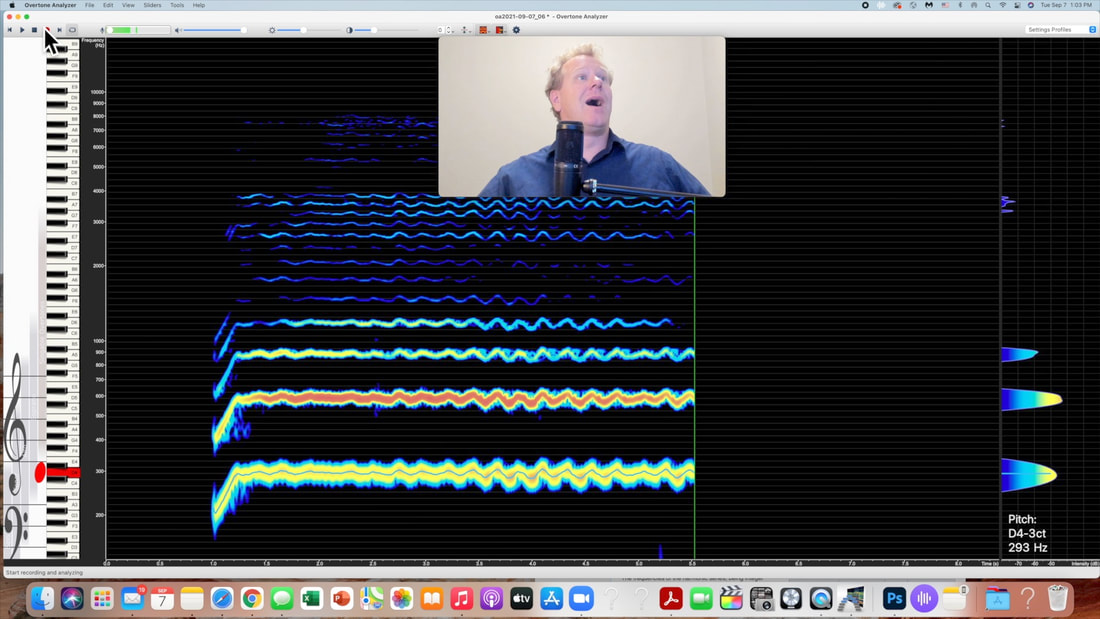
 RSS Feed
RSS Feed